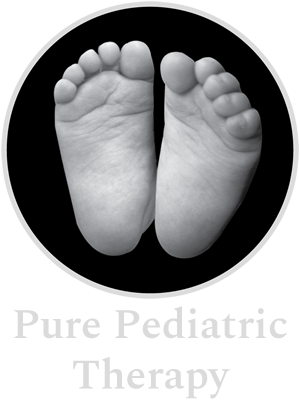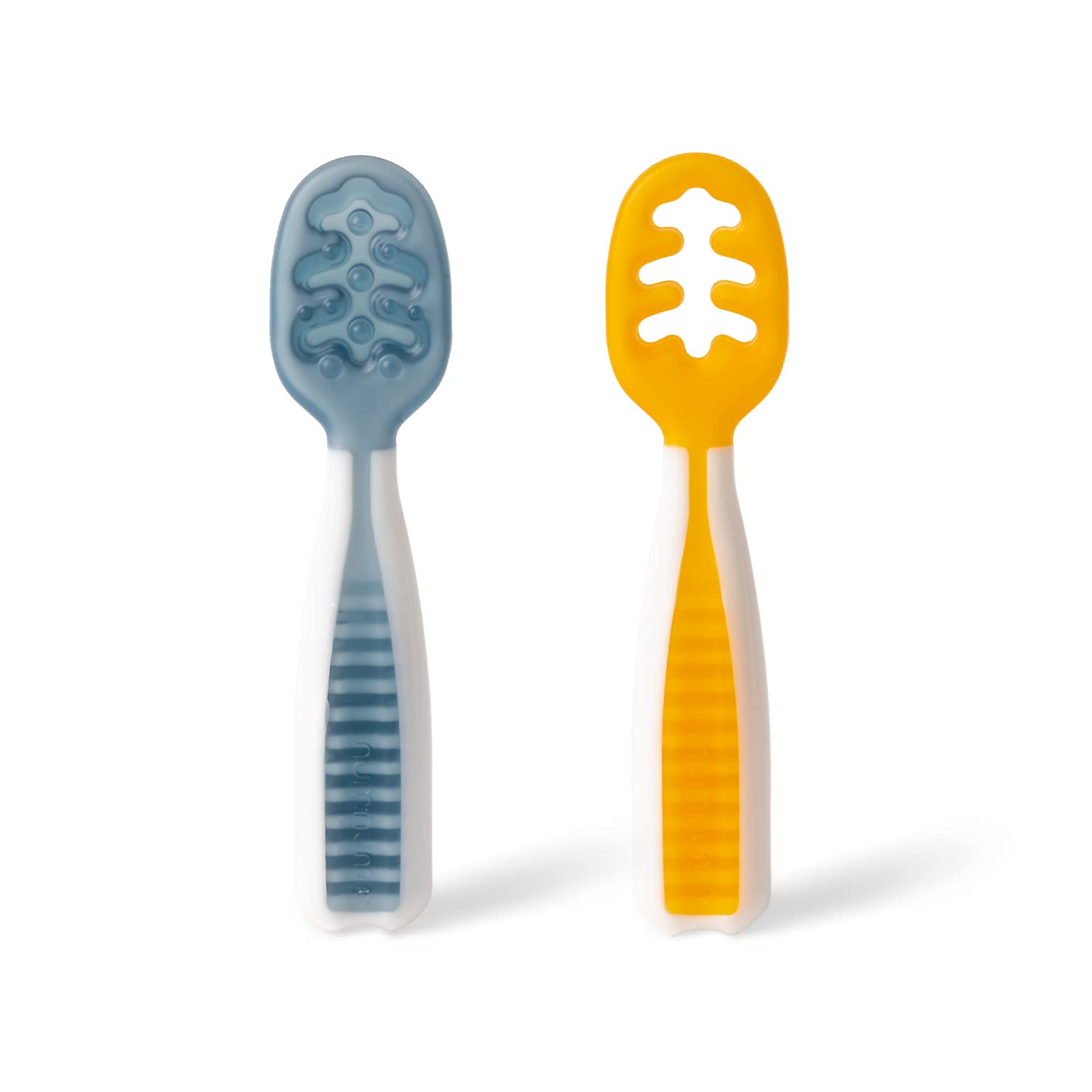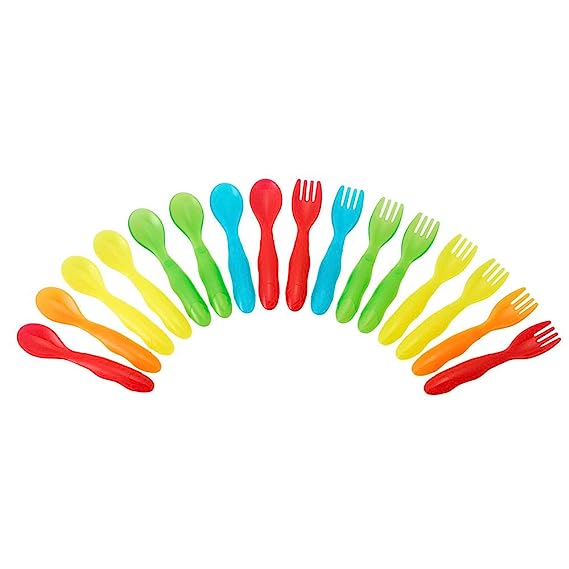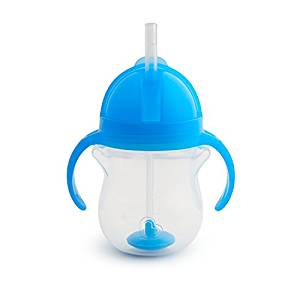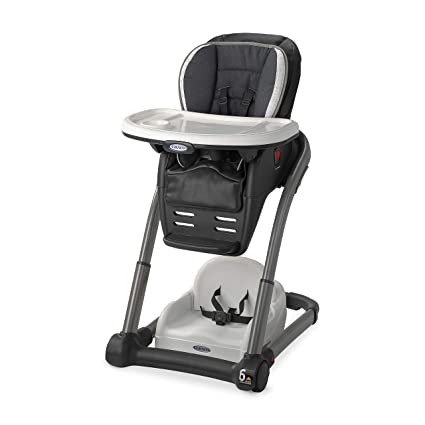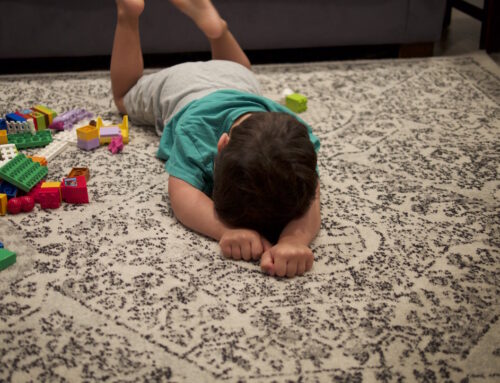Introducing Solids to Baby
An Occupational Therapist’s method to introducing solids and creating a positive mealtime environment
As a pediatric feeding specialist I get asked frequently by new moms, friends, relatives, and random strangers, “How do I introduce solids?” I will preface this post by saying, there is no right way, but I do believe the method I explain below will allow you to have a concrete plan and a child that is able to learn to eat in a positive and relaxed atmosphere without too much pressure associated with eating and mealtime. In addition, moving quickly through purees and spending the most time on table foods, will allow your child to develop the oral motor skills necessary for eating without forcing it too early or before they are ready. There are a few things I need to explain first before we get started with the “how“.
- Be Ready! I can’t tell you how many times I have heard, “my pediatrician said we are ready, but my child is only 4 months, should I start now?” I truly believe that waiting until 6 months is typically best, however my own child was “ready” at 5 months and so I started early. You do not want to rush this because once you start, my suggestion is always to be consistent (which is the next bullet). Have somewhat of an action plan (nothing ever goes exactly according to plan, especially with kids). You also want to make sure your child is “ready”. Some common signs a child is ready include: sitting without support, opening mouth/showing interest when others are eating, and grabbing food when you are eating. If you start a child too early, it can be overwhelming and turn into a negative experience, but if you start too late, you can have a child that is so used to only having milk that they don’t want more textures and it can also become negative.
- Be Consistent! Choose a time of day (I typically prefer morning or mid-morning because if there is an allergic reaction, you are able to contact your pediatrician and/or watch the reaction without it being nighttime). Once you begin, try not to skip days. Your little ones need the consistent practice of new textures and also the frequency to develop a taste for these new flavors.
- Be Confident! Try not to second guess yourself. If you are confident, your baby will see that and will become a better eater overall. If you are nervous and scared, your baby will read that as well. I always coach parents to smile and clap even when their babies are gagging to prevent the child from becoming frightened.
- Talk to your pediatrician! Make sure this is a topic that you have discussed with your pediatrician prior to beginning solids. They will most likely have their own views on the “how” and “when” and you should be open with them in discussing your views as well.
Lastly, because it is the buzz word right now, I will quickly dive into Baby Led Weaning (BLW). This term was coined in 2005 and describes a method of transitioning from breastmilk/formula in which the baby is in charge of feeding themselves more mature foods (typically soft, chopped, or minced) instead of caregiver-led spoon feeding with purees. Here’s my opinion: When babies are 6 months old, they are predominately using their tongues and mouths for sucking, which means that typically anything that enters their mouth will get sucked and swallowed. If we place a soft piece of avocado (not mashed or pureed) on a babies tongue, their first instinct is to suck and swallow, which will elicit a gag reflex. This is the babies way of protecting their airway from choking. With that being said, BLW involves some gagging which is completely normal, however in my opinion it increases the caregiver’s anxiety around mealtime, which in turn increases the child’s anxiety. From this one of three things happen: 1. The baby becomes desensitized to textures and eventually becomes an amazing eater 2. The baby becomes anxious around foods and begins to refuse mealtimes all together 3. The caregiver gives up, begins purees and prolongs the puree feedings, which creates an aversion to textures because there is no exposure to textures.
My method is to use purees as a way to teach oral motor skills and mealtime behaviors, and then move quickly to a more advanced/mature texture at your child’s pace.
Day 1-7: Begin with an oatmeal, barley or rice baby cereal. In the beginning, it is just for exploration so make sure you are feeding after a nursing/bottle session and only 2T at the most. (If you would rather not introduce cereals, or if your baby becomes constipated (like mine did), you can skip this step and spend longer on the vegetable purees).
Day 8-25: Try a new puree every 3 days, sticking with the same food for 3 days. My personal opinion is to follow this order: Sweet potato, carrots, squash, zucchini, avocado, peas.
From a skill perspective, you are looking for your baby to keep their lips closed and tongue in their mouth, without pushing any of the puree out. After these initial 3-4 weeks, your baby should be getting the hang of the purees and may be ready to move onto more advanced texture.
* A quick side note on baby “snacks” (ie: puffs, rice crackers, etc): These are only for practice, they hold zero nutritional value and should not be used as an actual meal or snack if your baby is able to tolerate textures.
Once you feel your baby is ready, you can begin to introduce a smashed texture. Smash a piece of a soft food (ie: potato, avocado, banana), reform into a chunk, and place in the side of their mouth. Your little one should begin to move their mouth up and down, showing their “chewing” skills. Once you feel confident with your child eating a mashed soft food, then you can offer minced/chopped soft foods in the same way.
As a general guideline, by 9-10 months, your baby should be efficiently eating soft table foods with little to no purees. You should be offering 3 meals per day and allowing your child to pick up pieces of food and hold larger strips of food, bringing them to his/her mouth. By 12 months, your child should be off of purees entirely and eating table foods 3-5 times per day to makeup the majority of their nutrition.
If your baby is gagging, vomiting, rubbing their eyes, and/or choking on foods. Please contact your pediatrician and/or seek out the help of a Occupational Therapist who specializes in feeding therapy (they will have the initials SWC after their name). If you have any questions or would like more information, please feel free to reach out via email and/or come into the clinic for a consultation.
